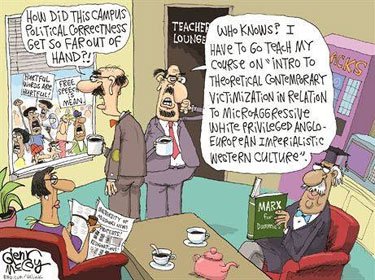The Gramscian Long March Has Completed Passing Through Yale’s Ancient Eight
Ressentiment, Skull and Bones, The Gramscian Long March, Yale, Yale Senior Societies

The portraits have apparently come down in this room inside a building on High Street in New Haven.
The revolution of the oppressed underclass population belonging to the nuclear center of America’s national elite is busy these days purging its predecessors and putting Replacement Theory into action, reports the Atlantic.
Yale’s Eulogia Society, better known as “Skull and Bones,” was founded by General William Huntington Russell, Y 1833, who was himself a radical abolitionist and friend and supporter of the madman and murderous terrorist John Brown. What can one say, other than noting that the Revolution has a notorious habit of devouring its own?
Secret societies have long been the purest distillation of what makes Yale Yale. They are famous for their mysterious rituals, their arcane symbols, and the imprint they’ve left on the broader culture. Skull and Bones shows up, variously, in The Great Gatsby (the 2013 film version), Gossip Girl, and The Simpsons. It is among the wealthiest, most exclusive, most well-connected groups at one of the wealthiest, most exclusive, most well-connected universities in the country. Contemplating their own rarefied status, members of Yale’s secret societies aren’t entirely sure what to do with it. They face the question roiling America’s elite campuses taken to its logical extreme: whether the modern social-justice politics advanced by college students can coexist with the staggering selectivity and privilege that benefit those same students.
Skull and Bones, the oldest of Yale’s senior societies, was formed in 1832. The other groups, composed mainly of Bones rejects, followed soon after. The Ancient Eight societies each own private buildings, known as tombs, where members meet twice weekly for dinner, debate, and “bios”—a ritual in which members share their life histories. Membership is for seniors only. Every spring, the current members “tap” a group of Yale juniors to take their place the following fall. The clubs were originally intended to prepare Yale men for leadership beyond the university. At this, they have found extraordinary success, producing a stream of C-suite executives, diplomats, and politicos. The reputation of society alumni as kingmakers and masters of the universe guaranteed that students would always be hungry to join.
Until they weren’t. In the 1960s, secret societies were criticized for elitism and discrimination. They faced pressure to disband. Instead, they adapted. Skull and Bones admitted its first Black member in 1965, and in 1975 tapped the head of Yale’s recently founded gay-student organization. The pattern repeated two decades later, as the societies feared they were becoming irrelevant by clinging to their all-male identity. In 1991, the Bonesmen tapped their first Boneswomen. (Alumni who didn’t want women in their secret society retaliated by changing the locks on the tomb.)
Today, many of the societies continue to resist students’ most progressive demands. When the Bones class of 2019 took down the portraits, some of their predecessors were aghast. It was “bad manners,” a former member of the Bones alumni board who graduated from Yale in the 1960s told me. (I interviewed 12 current or recent members for this article, along with several members from earlier generations; many of them requested anonymity, citing confidentiality agreements.) Given that the society’s former members were overwhelmingly white, he argued, it didn’t make sense to criticize Skull and Bones for accurately portraying its own legacy. “Their historical protest was silly,” he said. Still, the Bones board tried to appease students by putting up photographs of nonwhite alumni alongside the portraits. This year, the former board member told me, the board will unveil the society’s first portrait of a Black alumnus. Similarly, Berzelius agreed to rename the Colony Foundation. Elihu, however, is keeping its name.
Reports of alumni-student schisms within Yale’s secret societies are nearly as old as the societies themselves. Every decade or so, especially when a member of the Bush family runs for president (George H. W. Bush was also a member), opinion writers argue that left-wing students have trampled the values that sustained societies. That makes it easy to miss a much more significant shift within these groups. Picture a member of Skull and Bones, or any of the other Ancient Eight secret societies, and you’ll probably conjure a preppy white guy who summers on the Cape. In fact, in recent years, the demographics of Yale’s most elite organizations have been utterly transformed. In 2020, Skull and Bones had its first entirely nonwhite class. (Every year, the society admits around 15 rising seniors; selections must be unanimous, and members have final say.) Many of the societies now have only one or two students each year who aren’t from historically marginalized groups.
Today, the idea of Skull and Bones selecting someone whose dad was a Republican president seems inconceivable. The so-called tap lines—the tradition guaranteeing that the football captain and the student-body president would end up in Bones—are long gone, and few descendants of alumni members get in. Instead, the secret societies affirmatively select for students who are the first in their family to attend college, who come from a low-income background, or who are part of a minority group. This has created something of a diversity arms race. “People are, intentionally or not, thinking, ‘Does this cohort have too many white people?’” said Ale Canales, a member of the Berzelius class of 2020.





